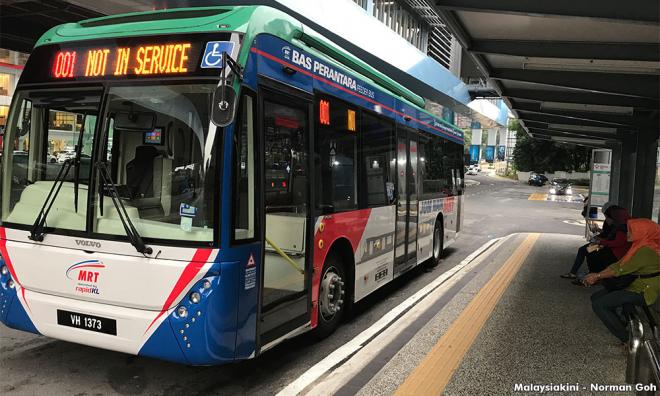
Despite billions of ringgit having been spent, the Mass Rail Transit (MRT) system in the Klang Valley appears to be let down by the less sophisticated part of the infrastructure - the feeder buses.
User-collected data on waiting times reviewed by Malaysiakini showed that feeder buses arrival and departure times are somewhat irregular, adding up to 34 minutes waiting time for MRT users. This hampers reliability, especially when coupled with the fact that bus schedules are not published.
However, many of the respondents who recorded their wait times for this article said they have managed to incorporate the wait times into their schedules, and are able to estimate a regular time for their journeys.
The feeder buses, which are operated by RapidKL, play the role of connecting MRT users to the station or to their final destinations.
Following a call-out by Malaysiakini on social media, 13 MRT users volunteered to note the time they arrive at the bus stop or MRT station, and the time they depart on the feeder bus on weekdays over two weeks. Waiting times for a total of 86 journeys were collected and analysed.
Feeder bus waiting game - a game of chance
According to RapidKL’s website, the buses operate at 10-15 minute intervals. The average waiting time for the respondents in Malaysiakini’s survey was 12 minutes - within the promised interval.
Even better, for 70 percent of the journeys analysed, the respondents waited less than 15 minutes for the feeder bus. Of that, most waited for five minutes or less.
However, a deeper look revealed relatively large variances in the waiting times of each commuter, as well as for the same commuter from one day to another.
For example, while one user had to wait 34 minutes for the feeder bus at an MRT station, another did not have to wait at all - making it a game of chance.
While the longest waits happen during non-peak evening hours, significant variances were recorded for the same buses during the evening peak times, from one day to the next.
For example, one commuter reported boarding the bus T801 from MRT Kwasa Sentral at 7.43pm. But the next time he wanted to board the bus, he had to wait until 7.59pm - an additional 16-minute wait.
In the absence of published bus schedules and general irregularity of the feeder buses, MRT users will default to arriving at the bus stop up to 30 minutes earlier, just in case the bus does not appear as anticipated.
The longest wait recorded during peak time was 28 minutes - with the bus departing MRT Phileo Damansara at 7.51am. In evening peak times, the longest wait was 25 minutes.
RapidKL classifies morning peak time for buses as 6am to 9am while evening peak time is from 5pm to 8pm.
When contacted, MRTCorp directed Malaysiakini to RapidKL, which operates the feeder buses. RapidKL has yet to respond to our queries.
Rainy days mean even longer waits
Trainee journalist Amirah Hazuanie Mohd Zaidi, 24, who takes the bus from MRT Bandar Utama, says she roughly knows the schedule, give or take five or 10 minutes wait on either end. But it’s not foolproof.
“I sometimes miss the bus, or we expect that bus is coming but it does not. If the bus comes late then we have to wait… It is much easier if you know the schedule,” Amirah said.
The weather also plays a part in the equation, said commuter Aisyah Hanim Mohamed Salleh, 19. She said rainy days mean long waits as buses are stuck in severe traffic due to flooding or other weather-related congestions.
“It's tedious to rely on public transport (when the weather is uncertain) because the schedule can be very jumpy… it won’t be set anymore because of the traffic jam and whatnot.
“If the weather is fine, the MRT feeder bus service is usually okay,” said the college student, who takes the feeder bus from MRT Mutiara Damansara to Perdana Shopping Centre routinely.
Even so, Aisyah said, the wait times could go up to 45 minutes, especially in non-peak times - a far cry from the intervals promised by RapidKL.
Double the wait on weekends
The average wait time for each commuter ranges from about nine minutes during morning non-peak hours to 18 minutes during evening non-peak hours.
But even respondents who clock in the longest waits have taken it in their stride.
Public Relations officer Charles Lopez, 24, who takes the bus from Mutiara Damansara to Publika, uses the feeder bus and MRT for commuting to work daily.
Lopez’s average wait time is 17 minutes but, according to the data collected, he once waited as long as 29 minutes for a feeder bus to return home.
He usually boards the bus at 8.30am to be at work by 9am, but this is not always the case.
Even so, Lopez is forgiving.
“It’s pretty on time. Just that sometimes, there are instances where I’ll be here at 8.30am but I can’t find the 8.30am bus so I have to wait for the next bus,” he said.
He said the buses are reliable on weekdays and he has learnt to double the anticipated wait time during weekends.
Hazman Naim Adnan, 24, who takes the bus from MRT Sungai Buloh, agrees with Lopez.
“Normally, you just have to wait five to 10 minutes. But once you go to the non-peak hours between eight and 10pm or in the morning during the weekends, then you have to wait a little bit longer. If you miss the bus, you have to wait, like 30 minutes,” he said.
The operations executive also wonders if the buses move according to the whims and fancies of the drivers.
Once, Hazman said, he sat in the stationary bus for 20 minutes, before it departed. On another day, the same bus departed after just 10 minutes at the station, even though it was the same route and he boarded at the same time of the day.
Gated communities also causing delays
Public transport advocacy group Transit believes the irregular timings are related also to the attitudes of drivers, who believe that those who board the buses can afford to take their time.
Transit member Cheong Sze Hoong, 41, said drivers may have the impression that if someone is in a rush, he or she would have jumped into a taxi or used e-hailing, instead.
“Buses are also slow to arrive because there are bus drivers who stop on the sides of restaurants or petrol stations, to let their buy a drink,” he said.
Cheong said as long as the first and last mile connectivity is not resolved, the people will be forced to use their own vehicles instead of relying on public transport.
And this does not just mean ensuring feeder buses follow a schedule, he said.
The infrastructure around railway stations, including MRT stations, are also not pedestrian or cyclist friendly while the growth of gated communities have made it a challenge for buses to serve housing areas.
“The pedestrian connectivity between stations in residential areas and homes nearby - well, most of the time they’re separated by cliffs, roads (and, weirdly), fences. Cycle paths towards LRT (and MRT) stations are virtually non-existent.
“As for buses, they need to zig-zag through different housing areas that are either gated or separated and with no walkable lanes between each other, in order to collect as many passengers as they can, which eventually means they get caught up in traffic, increasing waiting time,” Cheong added. - Mkini


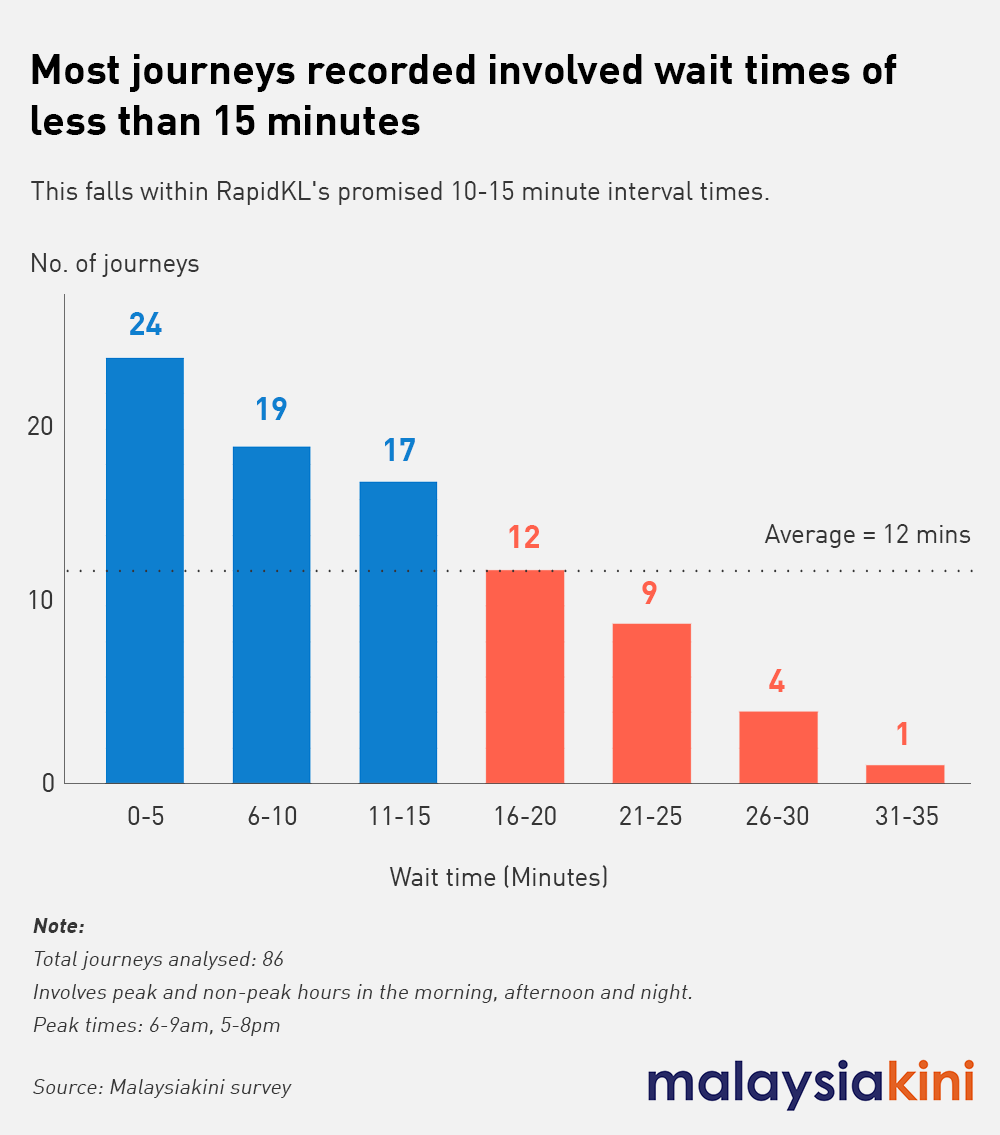
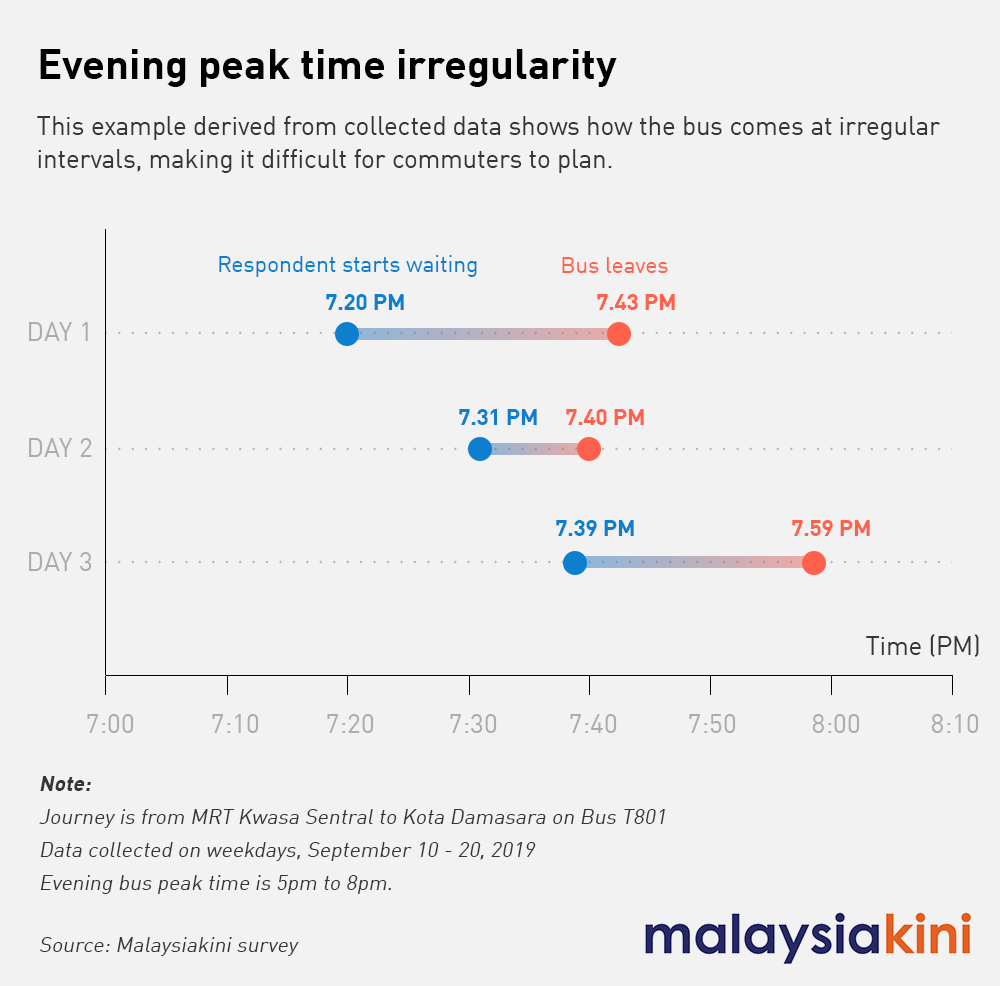
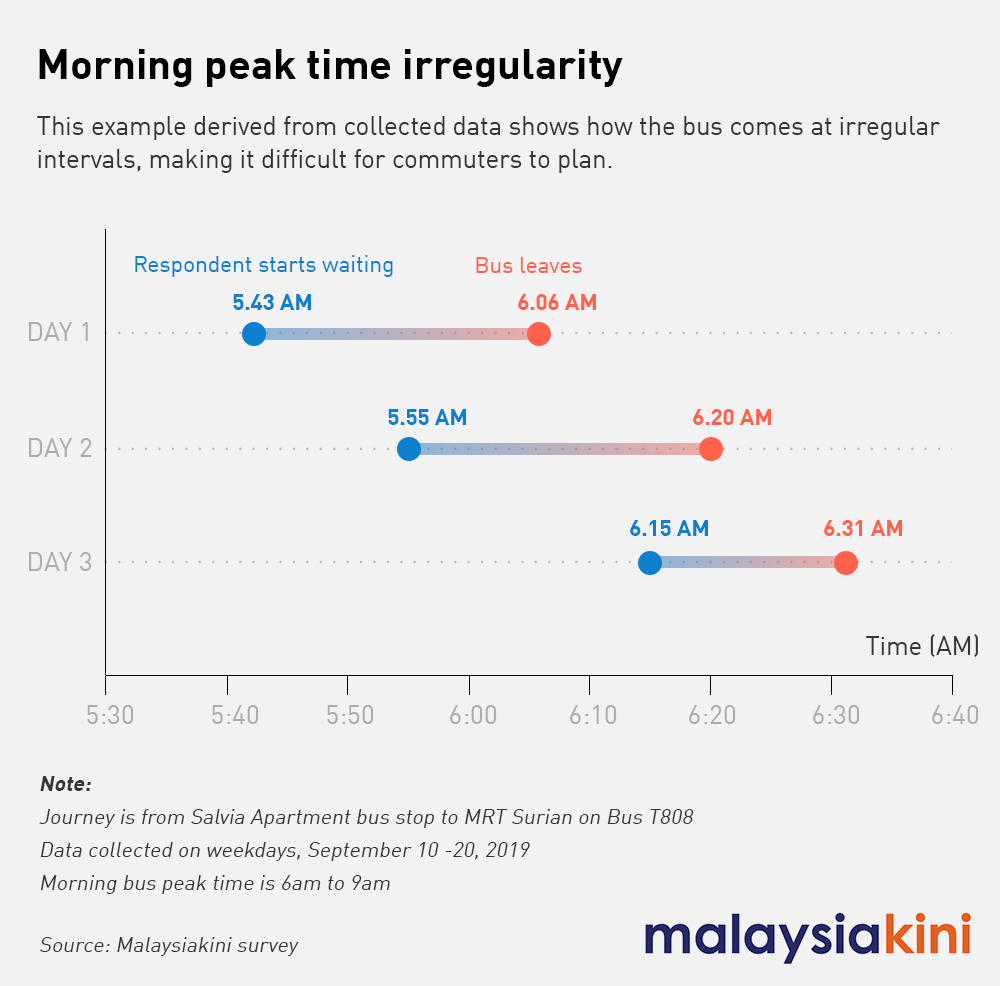
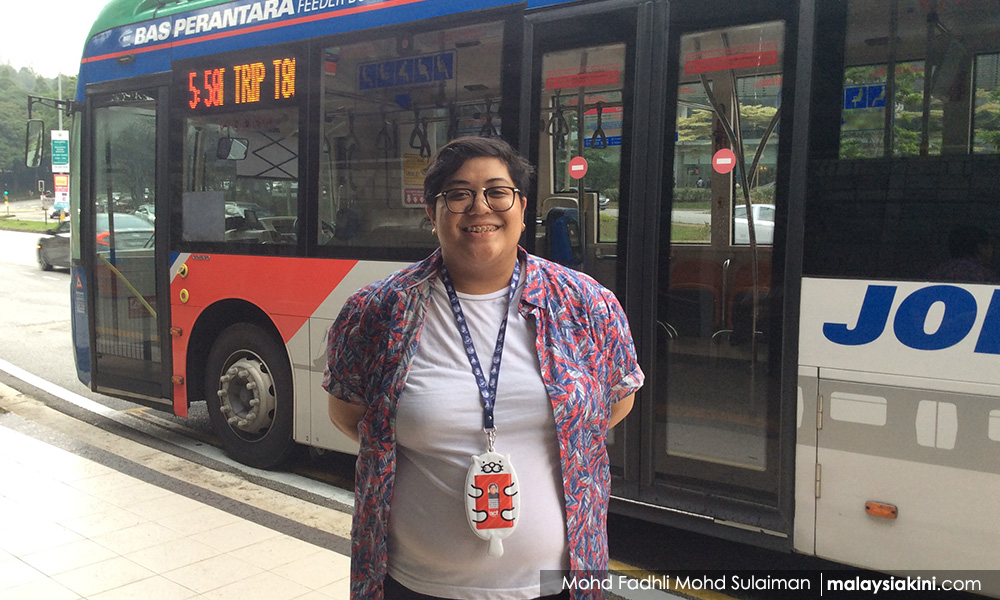
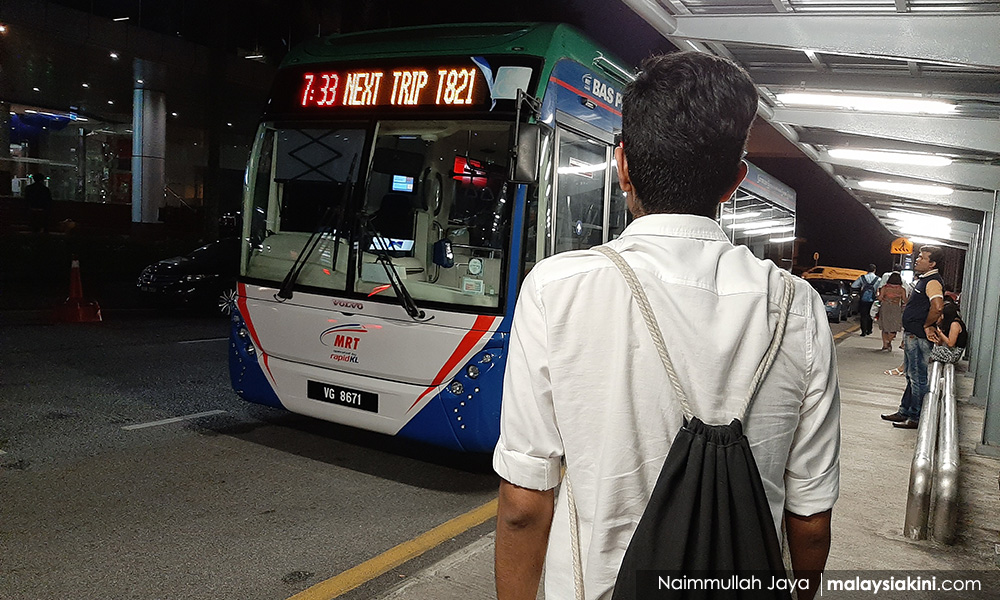
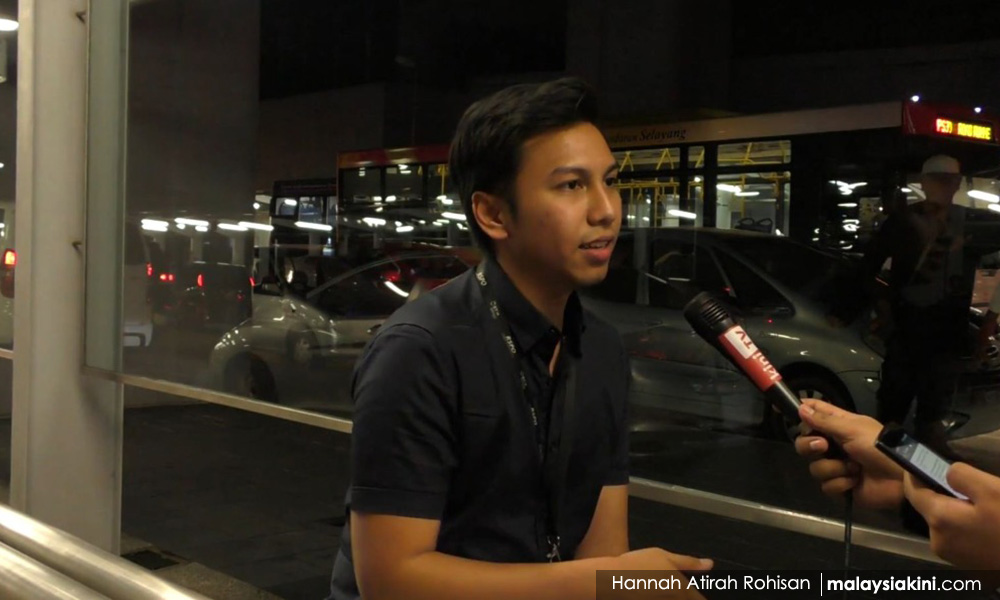
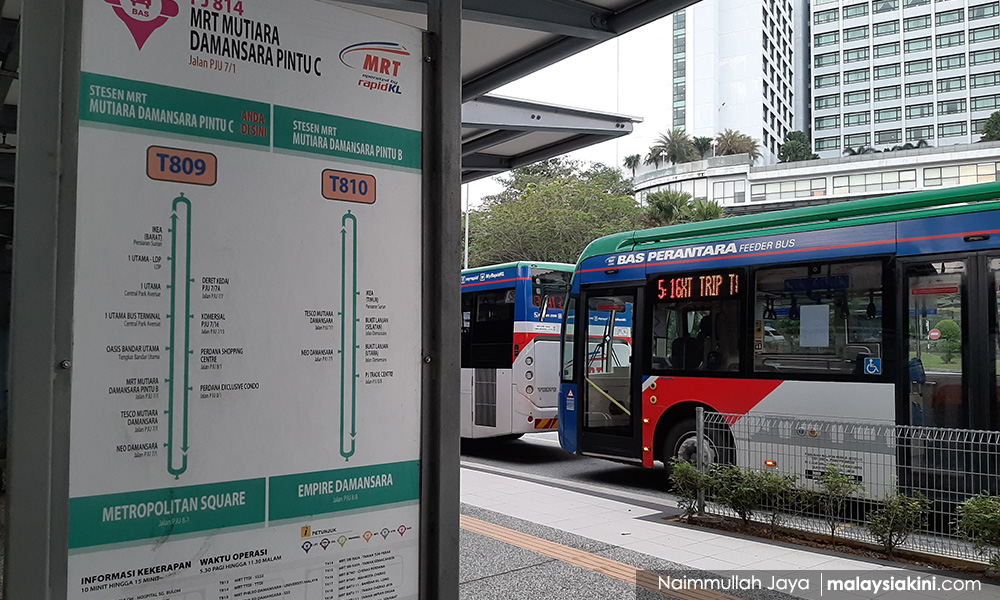
No comments:
Post a Comment
Note: Only a member of this blog may post a comment.